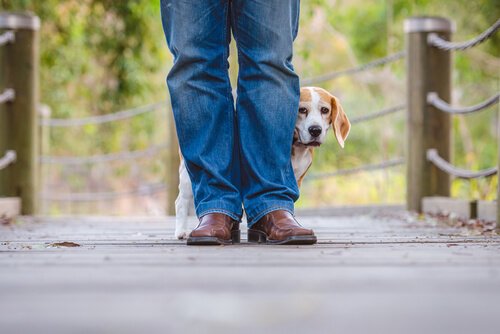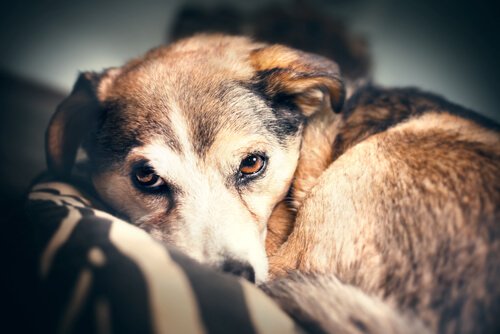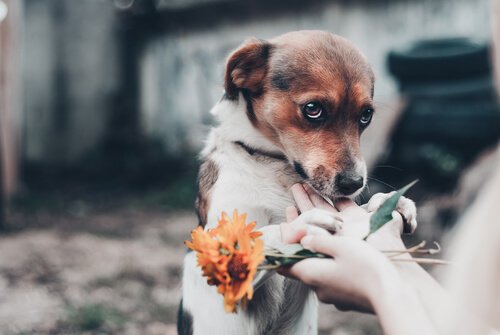What can I do if my Dog is Afraid of Thunder?

There are many cases of dogs that suffer from a fear of thunder, which is called “astraphobia.” This is a complex situation, difficult to solve, which produces a bad experience for many sensitive animals.
Variables that influence ‘astraphobia’
Factors such as breed, age and sex of the dogs affect this suffering and fear of thunder. Although we don´t know the origin of the fear of this phenomenon, certain theories imply that some dogs are genetically predisposed. Others develop fear of storms after a bad experience or seeing another animal or person who becomes anxious during a storm.
Specialists affirm that there is no guaranteed treatment against “astraphobia,” since what can help one dog may have no effect on another. In the same way one method that works during one storm may not work in another.
Some remedies against the fear of thunder

The intensity of the fear of thunder may be different in each dog. While some have moderate anxiety, others tremble and pant, and in the most severe cases, the dog can hurt itself by jumping through a window or running out into the street in the middle of a storm.
To help your dog if it´s afraid of thunder
- Try to get rid of hypersensitivity. Record the sounds of a storm for one minute; turn off the appliance when the dog becomes disturbed; wait for the animal to calm down and play the recording again for a short time. Repeat this operation about five times, in intervals of ten minutes for four or five days; let about two weeks go by and conduct a new session.
- Give him more security. Find a place where the dog feels safe and train him to go there during a storm. It can be a place in the basement, without windows and with the light off, so that he can´t see the lightning. In that place, there must be a doghouse with an open door and a comfortable mat. Stay with your dog for a while and give him something to eat, so that he thinks it is a pleasant place. You can also cover the pet with a blanket or towel.
- Anti-anxiety medications can also work, but it is not always easy to administer them. They take more than 20 minutes to take effect, so it will be necessary to “intuit” that there will be a storm.
- As with humans, some herbs and infusions will help the animal relax and feel better.
- The attitude of the owner is also important. If the owner gets stressed, startled or distressed, this will transfer to the animal. The best thing to do is to leave him alone, without punishing him or petting too much. Punishing the dog will only make him more afraid and anxious, since he will associate thunder not only with fear but also with punishment. Stroking or reassuring him is not good either, as this will teach him that his anxious behavior is appropriate and enjoyable for you.
Behavior modification techniques
Techniques and methods of behavior modification are very often effective in eliminating fears and phobias. The most appropriate techniques are called “counter-conditioning” and “desensitization.”

Apply these techniques gradually, and teach your dog to respond non-fearfully to sounds and other stimuli that previously scared him.
Begin by exposing your dog to a level of noise intensity that does not frighten him, along with the use of a pleasant stimulus, such as a ball or a fun game. Little by little, increase the volume and continue to offer him the pleasant stimulus. Through this process, the animal will associate “good things” with the sound he fears.
It is also useful to use a reputable expert trainer to help with this issue. Of course, this training must be carried out a few weeks before the stimulus of the storm or fireworks.
